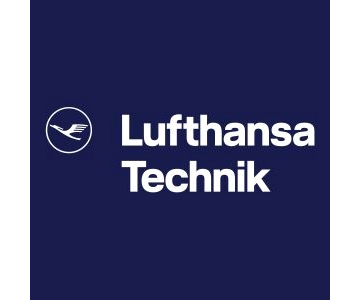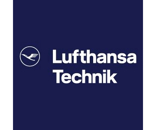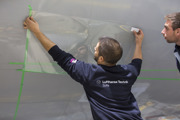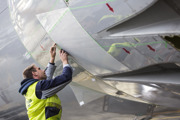

LUFTHANSA TECHNIK AG MODIFICATIONS (535)
AeroSHARK - Cutting emissions with sharkskin technology



The only certified and proven sharkskin technology
AeroSHARK is a durable bionic film that successfully imitates the skin of sharks and optimizes the airflow, enabling significant fuel savings and CO₂ reductions.
Just by using sharkskin technology, the global fleet of long-haul aircraft could save billions of euros.
Low Frequency Underwater Location Device (LF-ULD) on A320 family


The Low Frequency Underwater Locator Device (LF-ULD) is a self-powered device that provides an effective help in order to improve the search and recovery of submerged aircraft. The LF-ULD is not to be confused with the ULD, also known as Underwater Locator Beacon (ULB) that is installed on the Cockpit Voice Recorder (CVR) as well as the Flight Data Recorder (FDR) and emits ultrasonic impulses at 37.5 kHz. The LF-ULD will be mounted directly at the structure of the airframe and supplements the existing ULDs. Once the LF-ULD is emerged into water, it is being activated automatically and transmits at frequency of 8.80 kHz. Due to its lower frequency range the LF-ULD has a far longer detection range of at least 90 days after activation.
Low Frequency Underwater Location Device (LF-ULD) on B737


The Low Frequency Underwater Locator Device (LF-ULD) is a self-powered device that provides an effective help in order to improve the search and recovery of submerged aircraft. The LF-ULD is not to be confused with the ULD, also known as Underwater Locator Beacon (ULB) that is installed on the Cockpit Voice Recorder (CVR) as well as the Flight Data Recorder (FDR) and emits ultrasonic impulses at 37.5 kHz. The LF-ULD will be mounted directly at the structure of the airframe and supplements the existing ULDs. Once the LF-ULD is emerged into water, it is being activated automatically and transmits at frequency of 8.80 kHz. Due to its lower frequency range the LF-ULD has a far longer detection range of at least 90 days after activation.
ADS-B Out on A320 family


Automatic Dependent Surveillance- Broadcast (ADS-B) is the replacement and augmentation of RADAR-based aircraft surveillance technology. With ADS-B, the surveillance of aircraft does no longer rely on RADAR ground stations, but on aircraft based GPS receivers. Aircraft equipped with ADS-B broadcast their precise position and velocity data, as well as altitude and supportive information automatically and with no pilot or external input to ATC or to other aircraft.
The above listed EASA STC has been validated or approved by the following aviation authority agencies:
-
FAA (ST04266NY, Date of issue: 2018/11/06)
-
ANAC (2019S08-17, Date of issue: 2019/08/08)
Installation of Data Loader Connector Panel (DLCP)


The growth of aircraft systems operated by onboard loadable software and the extinction of 3,5” Floppy-Disks make common Airborne Data Loaders (ADL) / Multipurpose Disk Drive Units (MDDU) more and more inconvenient.
Lufthansa Technik (LHT) provides a plug and play Data Loader Connector Panel (DLP) for easy connection of any ARINC 615 Standard Portable Data Loader (PDL). Software Upload effort can be reduced remarkably with a modern Portable Data Loader connected to the Data Loader Connector Panel.
ADS-B Out on A330/A340


Automatic Dependent Surveillance- Broadcast (ADS-B) is the replacement and augmentation of RADAR-based aircraft surveillance technology. With ADS-B, the surveillance of aircraft does no longer rely on RADAR ground stations, but on aircraft based GPS receivers. Aircraft equipped with ADS-B broadcast their precise position and velocity data, as well as altitude and supportive information automatically and with no pilot or external input to ATC or to other aircraft.
Replacement of existing Multi-Mode Receivers with HoneywellIntegratedMulti-Mode Receivers introducing SBAS...


Replacement of existing Multi-Mode Receivers with HoneywellIntegratedMulti-Mode Receivers introducing SBAS capability
NAVIGATION - Replacement of existing Multi-Mode Receivers with HoneywellIntegrated Multi-Mode...


NAVIGATION - Replacement of existing Multi-Mode Receivers with HoneywellIntegrated Multi-Mode Receivers introducing SBAS capability.Rev 1: removal of one limitation.
Zonal Drying System InstallationRevision 1: extended applicability


Zonal Drying System InstallationRevision 1: extended applicability
Installation of a VIP Cabin Interior and miscellaneous aircraft systems

Installation of a VIP Cabin Interior and miscellaneous aircraft systems


